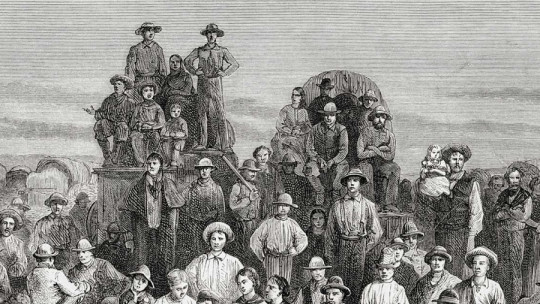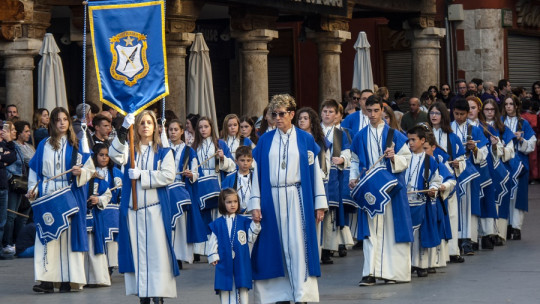
Christian tradition considers Luke, one of Jesus’ apostles, as the author of the third canonical gospel collected in the New Testament. According to experts, the text, which was originally written in Greek, dates back to approximately the year 60 AD, so if Luke were really its author, the evangelist would have undertaken the work as an old man.
The Church has always held this gospel in high esteem, since it is one of the ones that gives the most details of the life of Jesus. Apparently, and according to tradition, this is due to the close friendship that united Luke with the Virgin Mary, a friendship that allowed the apostle to gather much information from her about the life of the Messiah.
There is a fact about Saint Luke that many people ignore, and that is that, in addition to being an apostle and evangelist, he is the patron saint of painters. At first glance, it seems quite curious. Why should an evangelist be the representative of this artistic profession? To understand it, we are forced to take a short trip into the past. If you are interested in the topic, keep reading.
Saint Luke as patron saint of painters: who really was this character?
First of all, let’s review a little what is known about this apostle of Jesus. As is often the case with many biblical characters, there are few or almost no historical documents that support their existence beyond the Holy Scriptures. Tradition maintains that Luke was born in Antioch and that he was a doctor by profession; at least, Saint Paul, whom Luke accompanied on his apostolic journeyscalled him “dear doctor.” Oral accounts also recorded his death, which occurred in Achaia, Greece, when the evangelist was about eighty years old.
Knowledge of Lucas’ true profession also sheds no light on why he is the patron saint of painters. If Luke was, as Saint Paul states, a doctor, he should be a representative of the profession of medicine, not of painting. Why, then, is Saint Luke the patron saint of painters?
The true icon of the Virgin Mary
We must also seek the answer in tradition, which maintains that Luke was, nothing more and nothing less, the first (and only) painter who captured the true face of Mary. It is a legend with very ancient roots, whose origin is unknown. It seems that the apostle, thanks to his close relationship with the mother of Jesus, made at least three icons of her, which became relics and are currently preserved in three Roman churches: Santa María la Mayor, Santa María del Popolo and Santa María de Araceli.
Leaving aside whether the legend is true or not, the fact is that it laid the foundations for the later representation of the Virgin Mary. And also, of course, from Saint Luke. Because the character is represented in the iconography, either as an evangelist (generally in his form as an Ox or Bull, part of the Tetramorphs that captures the four evangelists), or as a painter portraying the Virgin. This is how El Greco captured it in his well-known icon on the subject (1567), when he was still in Crete, imbued with the Byzantine pictorial tradition.
Byzantine icons of the Virgin and their typology
From the legend of Luke as a painter of the Virgin, we can understand why the icons of the Christian East follow specific characteristics. And it is that everyone drinks from this first Marian representation that, since it was supposedly the true face of Mary, had to be preserved as a mirror of the real appearance of the Virgin.
The technique used for these icons is tempera on panel, and in them the Mother of God is represented based on a very specific iconography. All of them tend towards extreme hieraticism; Mary appears in a majestic attitude holding the Child, whom she serves as a throne. However, there is a profusion of typologies within this Byzantine representation, which we detail below.
1. The Virgin Theotokos or Virgin as mother of God
This typology begins to be represented from the Council of Ephesus (431), where Mary is consolidated as mother of God. Let us remember that, prior to this date, there were certain Christian currents that denied the divine motherhood of Mary; The council came to refute these theories and confirm the Virgin as the recipient of the divine seed..
The Theotokos virgins are very hieratic and follow a marked schematization of forms. The Child is usually on Mary’s lap, blessing; Generally there is no contact between mother and child, which is why these virgins are also spoken of as the throne of Jesus. The three crosses that usually appear allude to Mary’s virginity before, during and after childbirth.
2. The Virgin Glycofilusa or Virgin of Tenderness
This second typology of Marian representation, also based on the primitive icon of Saint Luke, presents an equally schematic Virgin, but much more expressive, since she lovingly leans towards her son and touches his head with hers.. Often, the Child rests his little hand on the mother’s mantle or even has a certain playful attitude, which breaks the marked hieraticism of this type of representations.
3. The galactotrophic Virgin or Virgin of milk
The third Byzantine typology in relation to the Marian representation is the Virgin galactotrophuse or Virgin of Milk, where Mary appears breastfeeding Jesus, in a clear parallel with her universal motherhood.
4. The Odhigitria Virgin or Virgin of the road
In this last Marian typology of Byzantine origin, Mary points to the Child who is in her lap, as if indicating that only through him can Truth and salvation be achieved.
Generalization of the iconography of Saint Luke as a painter
Since the 15th century, representations of the apostle carrying the original icon of the Virgin Mary begin to appear.as witnessed by the Coronation of the Virgin by Michele Giambono (ca. 1450), preserved in the Gallery of the Academy in Venice. In the painting Lucas appears with the Ox/Bull at his feet and solemnly carrying the icon of the Virgin, delicately framed in silver.
The Flemish artist Rogier van der Weyden (d. 1464) also has an exquisite oil painting in which Saint Luke appears painting the Virgin, in this case in his invocation of galactotrophuse o Virgin of milk, since Mary is discreetly apart breastfeeding the Child. Van der Weyden’s work has a surprising detail, characteristic of the Flemish primitives. Through the large window at the back you can see a wonderful landscape inspired by the towns of Flanders.
The character of the representation of the Virgin holding the hand of Saint Luke varies considerably depending on the period, the region and the artist.. Thus, while traditionally the original painting of the apostle would be an icon on wood, in van der Weyden’s painting Lucas appears to be drawing the Virgin on paper. In other representations, the evangelist stands at an easel and paints in oils.
The iconography of Lucas the painter extends into the 17th century, and there are many brotherhoods of painters that have the saint as their patron, under whose patronage they are placed. Famous is, for example, the Brotherhood of Saint Luke in Delft, to which Vermeer belonged, or that of Zaragoza, established in 1502.








